Wicking beds are a useful teaching aid and a hands-on way to introduce your students to gardening. The tips in this guide can also be used for home gardens, but this article refers to materials that comply with school regulations.
Choosing and Preparing the Site
Find a position that gets at least six hours of sunlight per day in winter (e.g., north-facing), with easy access and near a tap. Ensure the ground is level and avoid windy areas or ‘wind tunnels.’
Prepare the site by removing any sharp objects. Use carpet or sand to protect the liner from sharp objects. If nut grass is present, place a metal sheet beneath the bed.
Involving the Groundskeeper
Getting and keeping the school groundskeeper on board is essential. They can provide valuable knowledge and assistance while helping to prevent costly mistakes. For example, in one school, a wicking bed liner was folded down for easy filling, but that required the entire bed to be dug out and filled again. Keeping the groundskeeper informed from the start helps to ensure the beds remain free from accidental sprays.
If you’re lucky, they may also look after your bed over the holidays!
Picking Your Bed Size
There are three suitable bed sizes for schools:
- Square Wide Bed: 1,200 mm x 1,200 mm
- Long Wide Bed: 2,400 mm x 1,200 mm
- Long Narrow Bed: 2,400 mm x 600 mm (easier for smaller children)
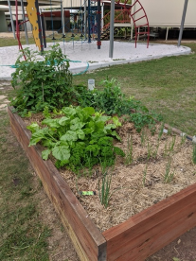
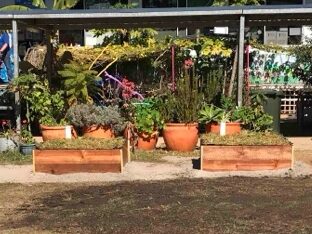

Materials and Equipment
Frames
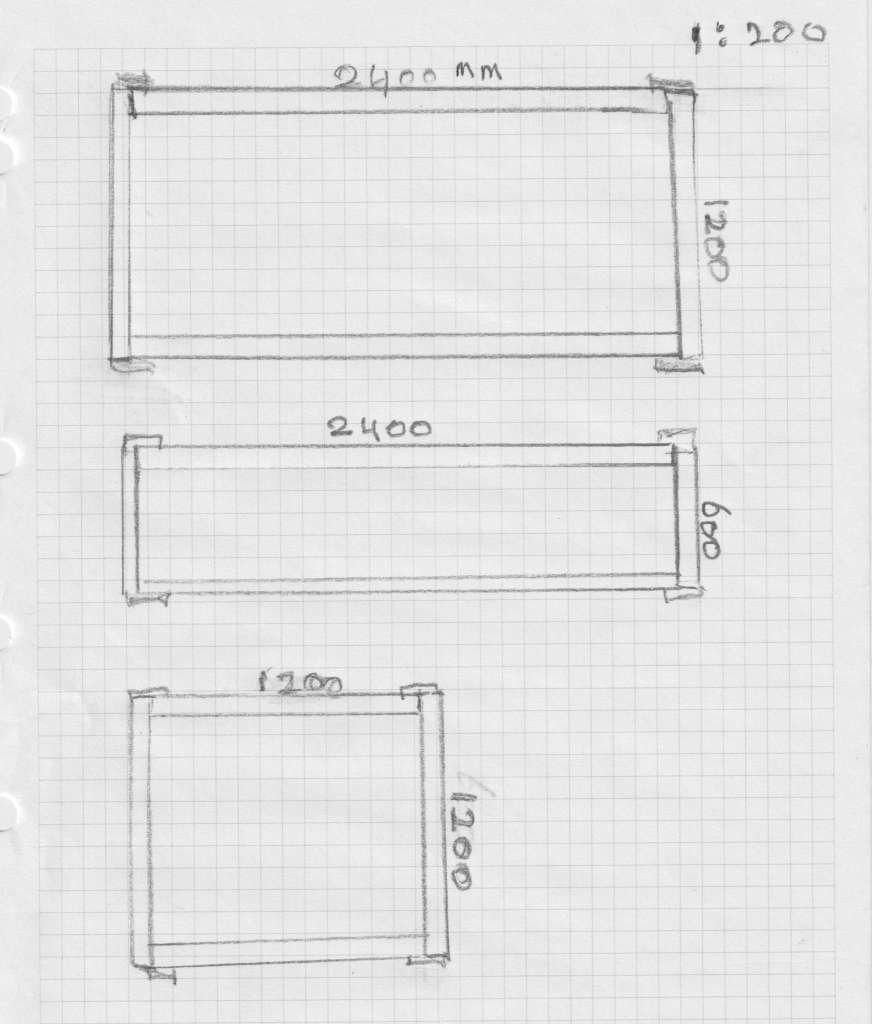
Use Micro PRO Sienna treated pine, available in sleepers of 2,400 mm x 200 mm x 50 mm. Request pre-cut planks for easier transport.
- Long Wide Bed: Four sleepers of 2,400 mm and four of 1,200 mm.
- Long Narrow Bed: Four sleepers of 2,400 mm, one cut into four 600 mm pieces.
- Square Wide Bed: Eight sleepers of 1,200 mm.
Note: Treat all cuts with wood preservative for longevity.
Joint Covers
To cover and reinforce the joints at the outside of the bed use ACQ-treated decking timber or hardwood (90 mm wide, four lengths of 400 mm). Reinforcement inside the bed is not desirable as it has sharp edges that eventually can cut through the plastic liner. It is also harder to do.
Liner Protector
To protect the top of the liner from sun and little fingers and get a clean and finished look use H3 treated 75 mm x 16 mm pine fence palings. Put it in after the liner is in place.
- Long Wide Bed: Two lengths of 2,500 mm, two of 2,300 mm
- Long Narrow Bed: Two lengths of 2,500 mm, two of 550 mm
- Square Wide Bed: Two lengths of 1,300 mm, two of 1,100 mm
Liner
To make the bed water and leak proof, use Concrete Underlay AS 2870 (double-layer 200-micron, 2,000 mm wide rolls). Use it as double layer for ease of cutting and for extra thickness. It should cover the floor and four sides.
- Long Wide Bed: 2,490 mm x 2,000 mm
- Long Narrow Bed: 2,000 mm x 1,000 mm
- Square Wide Bed: 2,000 mm x 1,900 mm
Water Storage
The water storage is 90 mm PVC stormwater drain pipe:
- Long Wide Bed: Two lengths of 500 mm, one length of 2,000 mm, one length of 2,100 mm
- Long Narrow Bed: One length of 500 mm, one of 900 mm, one elbow, one end cap, one screen cap (to stop mosquitoes)
- Square Wide Bed: Two lengths of 500 mm, one of 900 mm, one of 1,000 mm, three elbows, one end cap
Fittings
All beds need:
- A screen cap on the inlet pipe (prevents mosquitoes)
- One tank outlet (as used in metal water tanks)
- 180 mm of 12 mm poly pipe for inside the bed
- 30 mm of 12 mm poly pipe for outside the bed
Fasteners
- 16 batten screws (18-8 × 100 mm)
- 32 batten screws (10-8 × 40 mm)
- 30 mm nails or screws (to secure the liner protector)
Tools
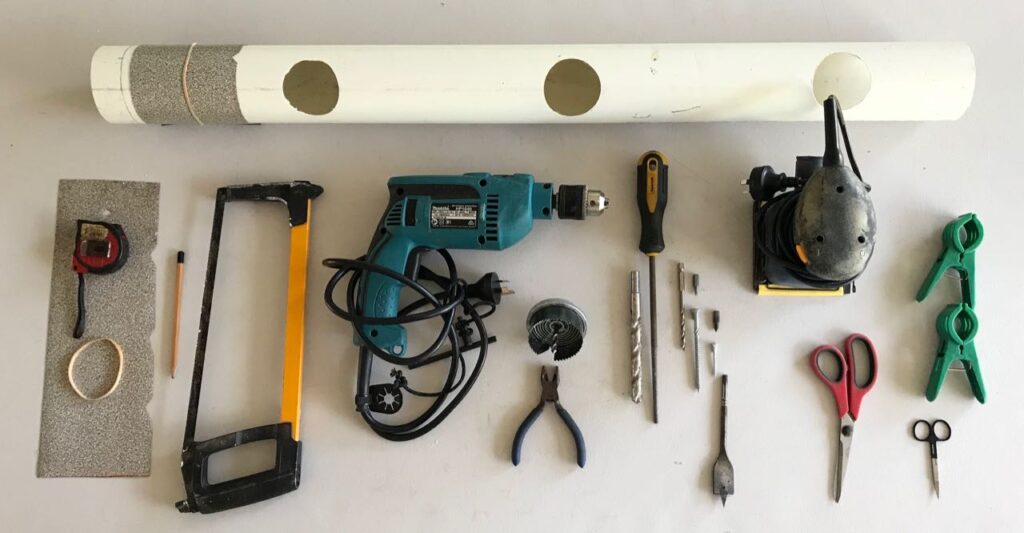
- A piece of lino with one straight edge, a pencil, and an elastic band (to mark the pipes for cutting).
- A hacksaw (to cut the PVC pipes).
- An electric drill
- 60 mm hole-saw (to cut the drainage holes in the PVC pipe)
- 22 mm drill bit (to cut the outlet hole in the timber)
- 12 mm drill bit (to cut a hole in the PVC pipe)
- 6 mm drill bit (to predrill holes for the screws when assembling the timber frame).
- A small pair of pliers (to remove the cut-out bits from the hole-saw).
- A screwdriver (to put the frame together).
- A flat sander (to remove sharp edges, smooth the liner protector, ensure it is splinter-safe and for the bed to look good).
- A rats-tail file (to widen the 12 mm outlet hole in the fill-pipe to 13 mm).
- A pair of scissors (to cut the liner).
- A pair of nail scissors (to cut the outlet hole in the liner).
- Clamps or masking tape (to hold the liner in place while filling the bed with soil).
Building the Bed
Read through the steps first to understand where everything is to go. Measure twice, cut once to avoid waste and mistakes. We learned the hard way.
Cutting the Pipes for the Water Storage
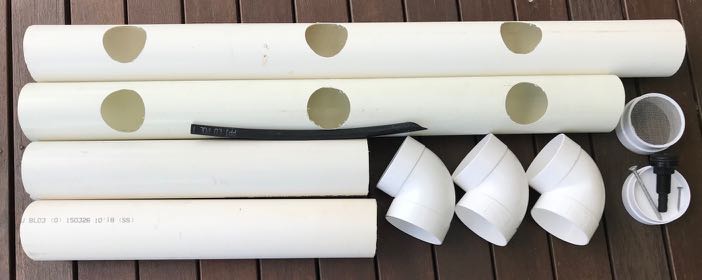
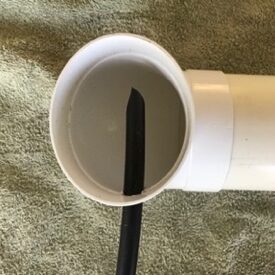
Measure and mark the lengths of PVC pipe.
- Long wide bed: one of 2,100 mm, one of 2,000 mm, two of 500 mm.
- Square wide bed: one of 1,000 mm, one of 900 mm, two of 500 mm.
- Narrow bed: one of 900 mm, one of 500 mm.
The cuts need to be straight. Use a drop saw if one is available.
If cutting by hand, mark the line as shown in the photo by wrapping the piece of lino around the pipe at the marked distance and mark the circle. When cutting along the line, role the pipe towards you. Mark the centres for the 60 mm holes on the long lengths. Centre the first hole 150 mm from one end, then the other holes 300 mm apart. Pliers may be needed to ease the cut-out bits from the hole-saw.
Preparing the Liner
On a flat, clean surface, fold the underlay inwards 400 mm along two opposite sides and 450 mm along the other two sides to fit the bed floor area. Folding it first makes placing the liner much easier.
Preparing the Overflow
Cut a 45-degree angle at one end of the 180 mm length of the poly pipe. When inserting the angled end into the overflow hole, make sure the cut is facing down to prevent it from intercepting water when filling the bed and confusing the person filling the bed.
Putting it All together
Especially if the cutting is done elsewhere and the material comes in a pack, check to make sure everything is cut correctly. Once on the site, lay everything out in order of use so you and any helpers know in which order things have to be assembled.
Assembling the Frame
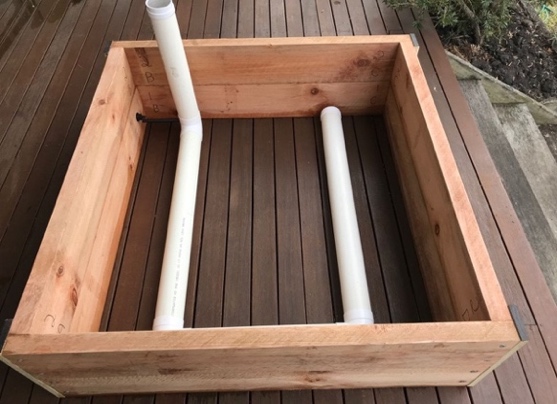
- Place the first four sleepers on a level surface; the inside frame measures should be:
- 2,400 × 2,300 for a long wide bed
- 1,200 mm x 1,100 mm for a square wide bed
- 1,200 mm x 500 mm for a narrow bed
- Pre-drill the screw holes, two per sleeper, and screw together.
- Place the second row of timber lengths on top of the first, and screw together.
- Screw the vertical 400 mm x 90 mm pieces at each end of the long sides to provide rigidity across the joints.
- Drill a 12 mm outlet hole through the timber on the side closest to the vertical inlet pipe. Centre the hole 140 mm horizontally from the inside corner and 110 mm vertically from the bottom. File the hole to tightly fit around the pipe.
Assembling the Water Storage
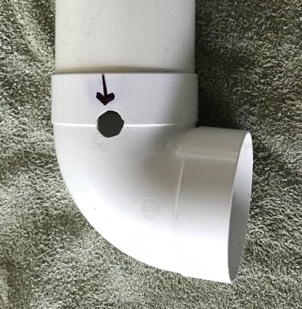
- Place an elbow at one end of the one 500 mm length, to be the fill pipe.
- Drill a 12 mm hole in the elbow of the fill pipe for the overflow poly drain pipe. Centre this 95 mm above ground level. Use the rats-tail file to widen it to get a tight fit.
- Connect this pipe/elbow vertically to the 900 mm pipe.
- Connect the PVC pipes.
- Both wide beds: Fit together the pipes into a U shape as shown in the photo above, with one end connected to the fill pipe.
- Narrow bed: join the 500 mm fill pipe and 900 mm length. Make sure the holes in the pipes are facing down.
- Place the end cap.
- Long wide bed: place on the 2,100 mm length of pipe, at the opposite end to the first hole.
- Square wide bed: place on the 1,000 mm length of pipe, at the opposite end to the first hole.
- Narrow bed: place at one end of the 900 mm length.
- Place the mosquito screen cap.
Fitting the Liner and Overflow
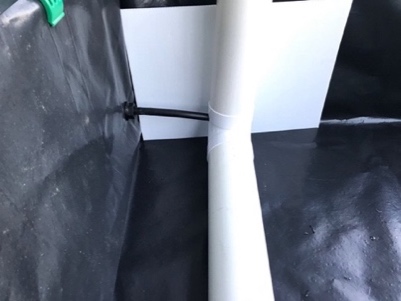
- Place the folded liner inside the fame and use clamps or masking tape to hold it up against the sides. Fold any excess over the top of the timber.
- Remove the nut and the O-rings from the tank outlet. (The O-rings are not needed.) Push the poly overflow pipe through the hole in the wooden frame from the outside and mark the centre of a 23 mm hole on the liner.
- Use nail scissors to cut the hole in the liner.
- Push the tank outlet through the liner and screw the nut on the inside of the frame. (It’s easiest to tighten the outlet from the outside.)
- Place the watering system in the bed.
- Push the square end of the 180 mm poly pipe onto the tank outlet and the angled end into the inlet hole in the pipe with the cut facing downwards.
- Insert the 30 mm poly pipe from the outside to keep out-flowing excess water away from the timber. (Use silicon in to glue it in to make it a bit more difficult for the little finger to pull it out.)
Installing the Liner Protector
Nail or screw the four lengths of the top liner protector in place. Sand any sharp edges and smooth the surface to protect against splinters and cuts.
Adding the Soil
Your bed is ready to fill. If you already grow vegetables, use soil from your best existing beds. If you have to buy soil, see the Soils for Wicking Boxes and Tubs for how to prepare ‘good’ soil for best growth.
You will need 1,000L (one cubic metre) for a long wide bed and 500L (half a cubic metre) for the long narrow bed or the square wide bed.


